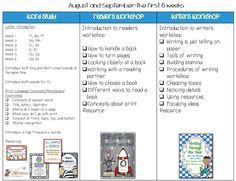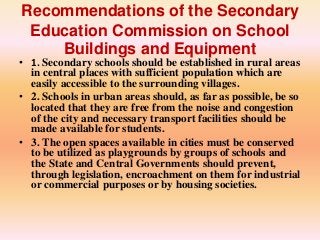
Your children can learn basic shapes knowledge by playing shapes games. Getting children to understand shapes and learn about their properties can help them build a solid foundation for future maths lessons. Shape games are a great way for children to learn how to name and identify shapes.
Shapes can be used by children to teach them how to identify and describe shapes in various sizes and orientations. The games can also help kids practice their shape knowledge in ways that are unfamiliar. Games like Shapes falling down can be used to help children learn about shapes that have been turned upside-down.
Shape Monsters, another interactive shape game, is also available. This interactive game will teach kids how to name and recognize shapes. Children will need to identify the correct shape, then move the finger to make it fall. A sound prompt will be sent to them when they have selected the correct shape.

It's a great way for children to practice their drawing skills. They can draw shapes on a white board or on real objects. Once they are done, they can slice the shapes so that they fit into a grid. This will allow them to practice the art of calculating angles. They will also learn to use an area formula. If they make an error, they will receive a "Try It Again!" message. They will accumulate points if they don't make a mistake.
The best shapes games are the ones that are engaging and colorful. These games are great for kindergarteners and preschoolers. Children will be able to create a solid foundation for learning geometry by using shape games. This will also help them to develop their maths skills and increase their confidence.
Online shape games are available for children. The most popular ones are Shape Runner, Shape Tunnel, Color Trouble, and Slice Shapes. These games will help kids identify basic shapes and teach them about symmetry, co-ordinates, and tessellating. They will also learn about faces, faces with angles, and other shapes. Using shapes games will also help kids develop their geometry skills early, as they will learn about the properties of shapes, and will be able to identify them in everyday objects.
In addition to shape games, there are also shape sorting games. These games will teach kids how to identify and name shapes created by their classmates. They will also learn how to sort shapes by two criteria, such as color and shape. Students may also be able to try different methods of sorting shapes, such as cutting them into squares. Students will also learn about the properties of shapes, such as area and perimeter.

Some shape games are not interactive. These are games that require drawing on paper or with scissors and tape. They are a great way to get your children used to drawing shapes. They can help children understand the shapes around them, like the shapes in their classroom.
FAQ
What is the difference in school and college?
Schools are typically divided into classes or grades with a teacher who teaches students. Colleges are bigger organizations that offer more specialized courses and may include university-level courses. While schools tend to focus on the basics, colleges can offer courses in a wide range of subjects, including science, language, business, and arts. The curriculum at both levels is intended to prepare students to study at higher levels.
What is the average salary of a teacher in early childhood education? (earning potential)
A teacher in early childhood earns an average salary of $45,000 per annum.
However, there is an exception to the rule: salaries in some areas tend to be more than average. Teachers who teach in large urban areas typically earn more than teachers working in rural schools.
Salaries also depend on factors such as the district's size and whether or not a teacher has a master's or doctorate.
Because they lack experience, teachers often make less than other college graduates. Teachers can see a dramatic increase in their income over time.
What is homeschooling exactly?
Homeschooling allows children to be educated at their own home by their parents. It is also known by the names private education or self-education.
For families who wish to educate their children at home, homeschooling is an excellent option. This allows them access to a quality education while staying at home.
The parents educate their children from birth to high school. They decide on the subjects they want to study and how much time each subject should take. Each student learns all on their own.
Parents decide when to begin teaching their children. Many schools recommend that children enroll in classes between the ages four and twelve. However, some families prefer to wait until their children are in kindergarten before they start teaching.
Parents can use any number or resources to assist them in learning the curriculum. There are many resources that can help you learn. These include videos, books, websites, magazines and even magazines.
Many families find homeschooling a great fit for their busy schedules. It allows parents to spend more quality time with their children than traditional public schools.
What are the alternatives to school?
The idea behind an alternative school is to offer students with learning difficulties access to education by providing them with support from qualified teachers who understand their individual needs.
The aim of an alternative school is to provide children with special educational needs with the opportunity to learn within a normal classroom environment.
Additional support is available if needed.
An alternative school isn't only for those who have been expelled from mainstream schools.
They are open to all children regardless of ability or disability.
Statistics
- “Children of homeowners are 116% more likely to graduate from college than children of renters of the same age, race, and income. (habitatbroward.org)
- And, within ten years of graduation, 44.1 percent of 1993 humanities graduates had written to public officials, compared to 30.1 percent of STEM majors. (bostonreview.net)
- Among STEM majors, that number is 83.5 percent. (bostonreview.net)
- Think of the rhetorical power of nineteenth-century abolitionist Harriet Beecher Stowe, Martin Luther King, Jr., or Occupy Wall Street activists with their rallying cry of “we are the 99 percent.” (bostonreview.net)
- Globally, in 2008, around 89% of children aged six to twelve were enrolled in primary education, and this proportion was rising. (en.wikipedia.org)
External Links
How To
Why homeschool?
There are many things to take into consideration when making the decision to homeschool your child or send him to school.
-
What type of education do you want for your child? Do you want academic excellence or social skill development?
-
How involved are you in your child’s education? Are you interested in keeping up with what your child does? Do you prefer to stay informed about what your child is doing?
-
Are there special needs that your child has? What can you do to help your child with special needs?
-
Do you have the ability to manage your children's time? Will you be able to teach your child every day at home?
-
What subjects are you going to cover? Math, science, language arts, art, music, history, geography, etc. ?
-
What amount of money are you able to spend on your child's education?
-
Is it possible for your child to start school at an early age?
-
Your child will need a place to live. This includes finding space large enough to house your child, as well providing facilities such as bathrooms and kitchens.
-
What's your child's average age?
-
When is your child supposed to go to bed?
-
When will he/she awaken?
-
What time does it take to go from point A to point C?
-
What distance is your child from school?
-
How far is it from your home to your child's school.
-
How will your child get to and from school?
-
What are some of the advantages of homeschooling?
-
What are their disadvantages?
-
Who will watch your child while he/she's outside?
-
What are your expectations?
-
Which discipline will you choose?
-
Which curriculum will you use for your studies?
Homeschooling can be done for many reasons. Some of them are:
-
Your child is unable to attend traditional schools because of learning disabilities.
-
You are looking for an alternative method of education for your child.
-
You require more flexibility in your scheduling.
-
You do not want to have to pay high tuition costs.
-
Your child receives a better education than what he/she would get in a traditional school setting.
-
You believe you can teach your children better than any teacher in a traditional school setting.
-
You don't like how the school system works.
-
You feel uncomfortable with the rules and regulations of the school system.
-
You want your child to develop a strong work ethic.
-
You want the freedom to choose which courses your child takes.
-
You want your child to receive individual attention.
There are other benefits to homeschooling:
-
It is not necessary to worry about uniforms and books, pencils, pencils, paper, or other supplies.
-
You have the option to customize your child’s education according their interests.
-
Parents can homeschool their children and spend time with them.
-
Students who have been homeschooled learn better because they're not distracted by peers.
-
Homeschoolers score higher on standardized exams.
-
Homeschool families tends to be happier overall.
-
Homeschool students are less likely not to drop out.